We’re about to dive into the colorful and sometimes chaotic world of LGBTQ+ rights with seven common myths about the LGBTQ+ community.
Key Points
- Common misconceptions include the belief that LGBTQ+ rights are a fad, that being LGBTQ+ is a choice, and that acceptance means agreeing with every aspect of LGBTQ+ culture.
- LGBTQ+ rights are essential for ensuring equality, dignity, and protection under the law for all individuals, regardless of their sexual orientation or gender identity.
- Being a better ally involves educating yourself about LGBTQ+ issues, listening to the experiences of LGBTQ+ individuals, supporting inclusive policies, and standing up against discrimination.
- Visibility plays an important part in promoting understanding and acceptance of LGBTQ+ individuals.
These are some of the most common myths that have taken root in public consciousness. Spoiler alert: they’re not only inaccurate, but they often serve to undermine the serious nature of discussions about inclusivity and rights.
So grab your rainbow-colored snacks (Skittles!) and let’s go.
Setting the Stage for LGBTQ+ Rights
LGBTQ+ rights have evolved a lot over the last few decades. From the Stonewall Riots in 1969 to the ongoing fight for equality across various nations, the quest for the rights of the LGBTQ+ community is filled with milestones underscoring the struggle for acceptance and recognition.
Yet, despite progress, misconceptions persist, often perpetuated through stereotypes and a lack of understanding. It’s often said that people fear what they don’t understand.
So, as we we dive into each of these misconceptions about the LGBTQ+ community, we’ll not only dispel the myth but also celebrate the resilience and diversity of the community.
Why Misconceptions Matter
Misconceptions can lead to stigmatization and discrimination, so it’s very important to address them with clarity (and sarcasm). In a world increasingly focused on dialogue and education, debunking these myths is the first step toward empathy and allyship.
Plus, who doesn’t like to laugh while they learn? Let’s kick things off with the idea that all LGBTQ+ rights are just some fleeting trend.
- Setting the Stage for LGBTQ+ Rights
- Why Misconceptions Matter
- 1. Myth: LGBTQ+ Rights Are Just a Fad
- 2. Myth: All LGBTQ+ People Are Just Out for Attention (the Spotlight Fallacy)
- 3. Myth: LGBTQ+ Rights Are Only About Marriage
- 4. Myth: Trans Rights Are Just a Phase
- 5. Myth: Being LGBTQ+ is a Choice
- 6. The LGBTQ+ Community Is Just One Big Party (Glitter and Glam)
- 7. Myth: Acceptance Means Everyone Has to Agree
- The Importance of Education
- FAQs
1. Myth: LGBTQ+ Rights Are Just a Fad
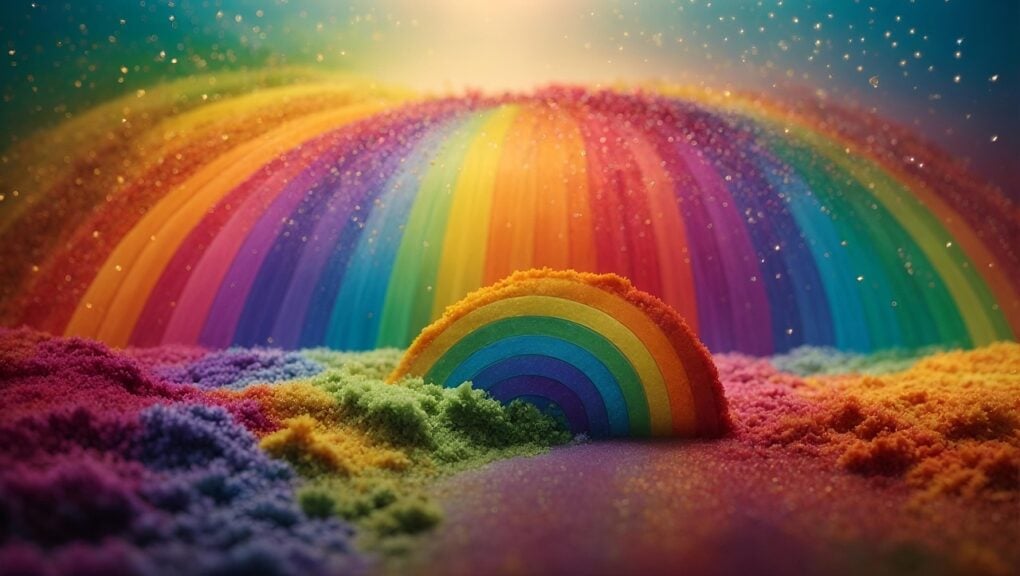
One of the most persistent misconceptions is that LGBTQ+ rights are just a trendy fad, like neon leg warmers or the Macarena. This notion suggests that the fight for equality is merely a momentary societal phase that will eventually fade away.
However, the reality paints a much richer picture. LGBTQ+ rights have been an ongoing battle for decades, rooted in centuries of oppression and systemic discrimination.
It’s not just a passing trend; it’s a human rights issue that has been fought for by countless individuals before and will be continued by future generations.
Conservatives act as if transgender people just “popped up” in the last few years, or that it’s something that can be “forced onto our children through peer pressure, teachers, or a desire to be part of the latest “trend.”
Obviously it’s all nonsense, but there are people who believe these lies.
The idea that someone’s sexuality or gender identity could be a “trend” makes sense to people on the Right.
These are the same people who didn’t seem bothered by drag shows until they became the latest Conservative culture war.
Speaking of drag shows, have you heard a word about them recently? They were saying things like “drag queens are “groomers”” not too long ago. Funny how such a dangerous crisis in America appeared to just “go away.”
I guess that critically important “problem” resolved on its own.
To fully grasp the reality of LGBTQ+ rights, we need to look at their historical context.
From the early 20th century’s clandestine gatherings of LGBTQ+ individuals advocating for visibility to today’s Pride marches attended by millions, the movement has deep historical roots.
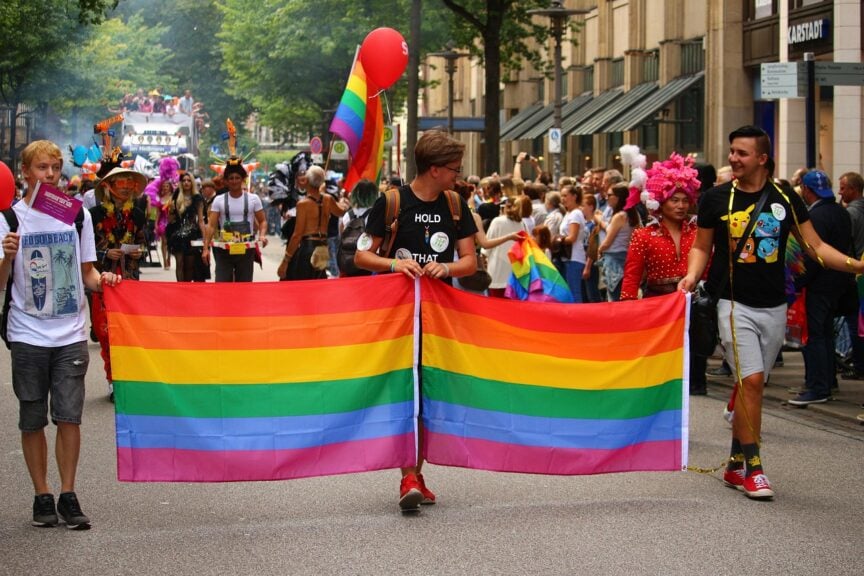
The fight for rights, visibility, and acceptance is as timeless as the quest for any basic human rights, and it’s certainly not going anywhere anytime soon.
So, let’s dispense with the notion that it’s just a trendy hashtag and recognize it for what it is: a struggle for equality.
2. Myth: All LGBTQ+ People Are Just Out for Attention (the Spotlight Fallacy)
Another common misconception is that LGBTQ+ individuals are simply seeking attention.
This stereotype suggests that their identities are mere performance art, designed to capture the public’s attention.
Let’s set the record straight: having a sexual identify other than straight/cisgender is definitely not about seeking validation from society.
In fact, living authentically carries with it threats of hate and discrimination.
Just because some people share their stories publicly doesn’t mean everyone is seeking the limelight.
No one is going to misrepresent themselves as anything other than heterosexual just to get attention.
Particularly when that type of attention can make life more difficult for members of the LGBTQ+ community.
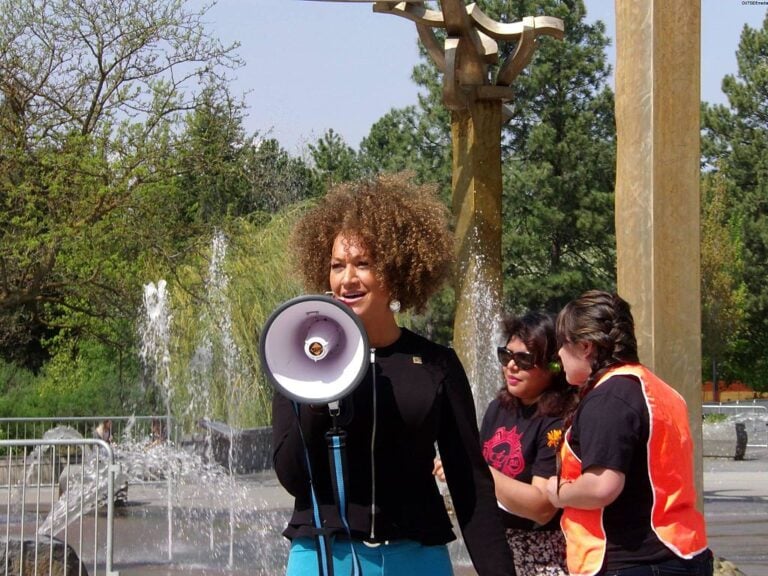
It would be like Rachel Dolezal going to a KKK rally during the time she was misrepresenting her identity by claiming she was a black woman (I realize that’s a weird comparison to make, but I’m weird. Get over it).
It’s about living authentically, often in the face of adversity.
Many LGBTQ+ individuals lead quiet, fulfilling lives, focusing on their families, careers, and personal interests rather than pursuing attention.
The visibility of LGBTQ+ individuals in media and culture has increased, but this doesn’t equate to a desire for attention.
Remember this important fact and use it whenever you are analyzing a situation: Correlation does not equal causation.
For example, crime goes up whenever more people are buying ice cream. Does that mean the ice cream purchases are causing more crime?
No, but more people tend to buy ice cream when it’s hot outside—so during the Summer. Crime rates also go up over the Summer months (maybe because people get grouchy and irritable when they’re hot).
Whatever the reason, there is a correlation between ice cream purchases and increasing crime rates, but that does not mean that one is causing the other.
Instead, it’s an attempt to normalize diverse identities and experiences in our society, allowing others to feel seen and validated in their own lives.
Highlighting diverse stories is an important part of educating society, not for seeking the spotlight.

3. Myth: LGBTQ+ Rights Are Only About Marriage
When many people hear the term “LGBTQ+ rights,” they immediately think of same-sex marriage. While marriage equality is indeed an important milestone, it’s far from the only issue facing this community.
Narrowing LGBTQ+ rights down to just marriage is like saying the only meal at a buffet is dessert—delicious, but only a small part of what constitutes a “buffet.”
This milestone is currently under threat. After a long battle for equality, a Conservative majority on the Supreme Court threatens this win.
After overturning Roe v. Wade, Justice Clarence Thomas included comments in his written opinion about other “woke rights” Republicans could overturn.
His “suggestions” included: same-sex marriage, access to contraception, and oddly enough, interracial marriage (I say “oddly enough” because Thomas’ wife is white).
LGBTQ+ rights encompass a wide range of issues, including employment discrimination, healthcare access, housing rights, and protection against hate crimes.
President Joe Biden attempted to include transgender students in Title IX, a landmark federal civil rights law in the United States that was enacted as part of the Education Amendments of 1972, but Republican governors/attorneys general sued the administration to prevent the change from happening in their states.
Who would actively fight against protecting students from discrimination based on their identity?
Republicans. That’s who.
Understanding the broader spectrum of LGBTQ+ rights is a necessary step in the fight for true equality. Issues like transgender rights, mental health support, and representation in media are just as significant.
Mental health support: After Donald Trump was elected in 2024, crisis calls from LGBTQ+ youth increased dramatically. To show his support for the youth of America—who were obviously hurting—Donald Trump removed the LGBTQ+ specialists at the crisis hotline (People who were part of the community and better equipped to handle their calls were now no longer available).
This was only a small part of their overall campaign to scrub anything related to DEI or gender identity from the federal government (including the use of pronouns in government employees’ email signatures (but they’re not petty at all!).
The fight for rights spans beyond the aisle of a wedding chapel; it extends into workplaces, schools, and healthcare facilities. It’s about ensuring safety, dignity, and acceptance in all walks of life.
So let’s toast to love, but remember to celebrate all aspects of the LGBTQ+ community beyond just marriage.
4. Myth: Trans Rights Are Just a Phase
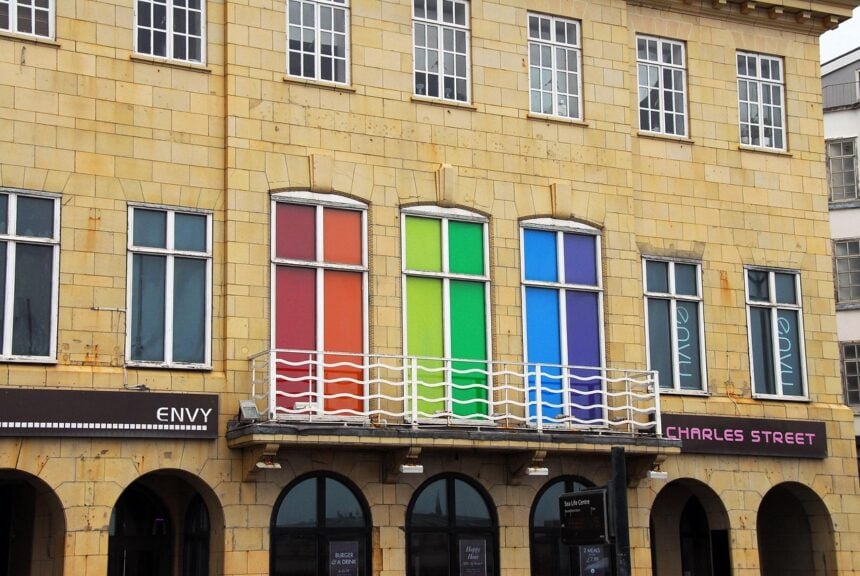
One of the most damaging misconceptions is that transgender rights are just a phase, reflecting a societal trend rather than acknowledging the historical and ongoing struggles faced by transgender individuals.
This myth undermines the legitimacy of transgender identities and the importance of advocating for their rights.
Gender identity is not a passing trend but a fundamental aspect of who a person is, deeply ingrained and deserving of respect.
Conservatives like to fearmonger about trans athletes in girl’s sports or the false claim that trans youth are coercing other students at their school to change their gender identity.
They behave as though it were some sort of “fad” or an epidemic that could spread throughout the population.
Kinda like Measles. Right, RFK?
It’s just further evidence of the ignorance and close-minded thinking found in every society.
Their commentary is more than just political rhetoric, however. The things they say can have real-world consequences.
Transgender individuals have been kidnapped, tortured, and murdered in this country.
Attacking marginalized communities is deadly serious and it fails to take into consideration the mental and emotional well-being of our fellow Americans.
No one deserves to be ostracized over a facet of their identity that’s beyond their control.
Trans visibility is an essential part of the dismantling of stereotypes and misconceptions. Increased visibility in media, politics, and everyday life helps normalize transgender identities and increase understanding within society.
Acknowledging and respecting individuals for who they are—beyond societal norms and expectations—creates a more inclusive environment for everyone (“DEI!” a voice is heard shouting from the White House).
It’s essential to support and understand the complexities of gender identity and not dismiss them as “mere phases.”
5. Myth: Being LGBTQ+ is a Choice
The idea that being LGBTQ+ is a choice persists in society, often leading to further discrimination and misunderstanding.
Many people argue that if someone chooses to identify as LGBTQ+, they can just “choose” to be straight.
This line of thinking is not only flawed but harmful. Sexual orientation and gender identity are intrinsic aspects of who individuals are, not decisions made at a crossroads.
Research shows that sexual orientation and gender identity are not choices but rather a complex interplay of biological, environmental, and social factors.
Recognizing this truth is vital for acceptance and dismantling harmful stereotypes. Just as one cannot choose their eye color, one cannot choose their sexual orientation or gender identity.
Understanding this distinction is the first step in promoting empathy and support for LGBTQ+ individuals.
6. The LGBTQ+ Community Is Just One Big Party (Glitter and Glam)
With all the colorful parades and exuberant celebrations, it’s easy to fall into the trap of believing that the LGBTQ+ community is simply one big party.
While festivities like Pride are about visibility and celebration, they also serve as moments for advocacy and remembrance. These events highlight the struggles and triumphs of LGBTQ+ individuals, providing a space for community bonding and solidarity.
Behind the vibrant celebrations lies a serious commitment to activism and social justice.
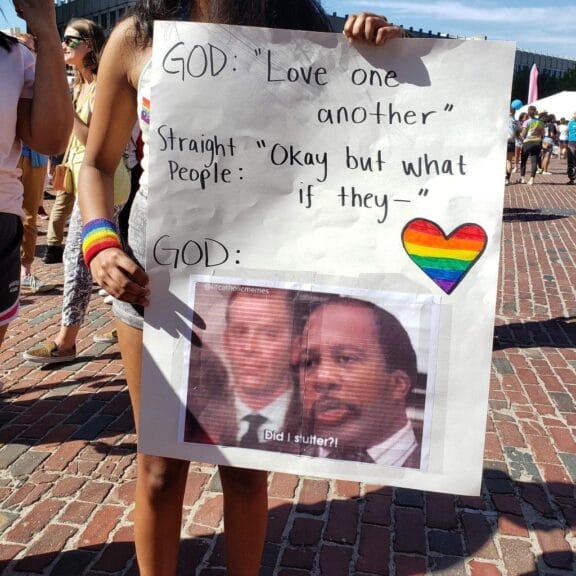
The LGBTQ+ community works tirelessly to address issues such as discrimination, violence, and inequality.
Many individuals dedicate their lives to fighting for change, often facing significant personal risks in the process.
Acknowledging both the joy and the struggles within the community creates a more nuanced understanding of what it means to be part of the LGBTQ+ community.
So, while there might be ample glitter, there’s also an abundance of grit.
7. Myth: Acceptance Means Everyone Has to Agree
One final misconception that often arises is the belief that acceptance of LGBTQ+ rights means everyone must agree with every aspect of LGBTQ+ culture or identity.
Acceptance isn’t about uniform agreement; it’s about recognizing the humanity and dignity of all individuals, regardless of their sexual orientation or gender identity.
Just as we don’t all have to like pineapple on pizza to coexist peacefully, we don’t have to agree on every aspect of LGBTQ+ culture to support basic human rights.
True acceptance lies in understanding and respecting differences while finding common ground. It involves listening, learning, and growing from diverse perspectives.
Communication is a platform for understanding and it creates an environment where everyone feels valued. The richness of the LGBTQ+ community comes from its diversity—embracing that diversity can lead to a more inclusive society for all.
The Importance of Education
Throughout this journey, we looked at several misconceptions and myths about the LGBTQ+ community. From the false notion that LGBTQ+ rights are merely a passing trend to the belief that being LGBTQ+ is a choice, we have debunked common myths.
Understanding the broader spectrum of LGBTQ+ rights and the complexities of gender identity is essential when promoting empathy and support within society.
Education is a powerful tool in dismantling misconceptions and promoting understanding. By engaging in conversations, seeking knowledge, and listening to diverse experiences, we can create a more inclusive world.
Each of us has a role to play in advocating for equality and supporting marginalized communities. It’s important that we challenge our own biases and extend grace and respect to those around us.
FAQs
What are the main misconceptions about LGBTQ+ rights?
Common misconceptions include the belief that LGBTQ+ rights are a fad, that being LGBTQ+ is a choice, and that acceptance means agreeing with every aspect of LGBTQ+ culture. Each misconception oversimplifies a complex topic.
Why are LGBTQ+ rights important?
LGBTQ+ rights are essential for ensuring equality, dignity, and protection under the law for all individuals, regardless of their sexual orientation or gender identity. They represent a fundamental aspect of human rights.
How can I be a better ally to the LGBTQ+ community?
Being a better ally involves educating yourself about LGBTQ+ issues, listening to the experiences of LGBTQ+ individuals, supporting inclusive policies, and standing up against discrimination.
What role does visibility play in LGBTQ+ rights?
Visibility plays a crucial role in promoting understanding and acceptance of LGBTQ+ individuals. It helps normalize diverse identities and encourages societal acceptance.
Are all LGBTQ+ individuals the same?
No, the LGBTQ+ community is diverse, containing a variety of identities, experiences, and perspectives. Understanding this diversity is essential for fostering inclusivity.
.
In summary, misconceptions about LGBTQ+ rights can lead to misunderstanding and discrimination. By recognizing that LGBTQ+ rights are not a trend, that acceptance is diverse, and that the community is complex, we can become a more inclusive society.
Education and open dialogue are vital for promoting understanding and empathy.







